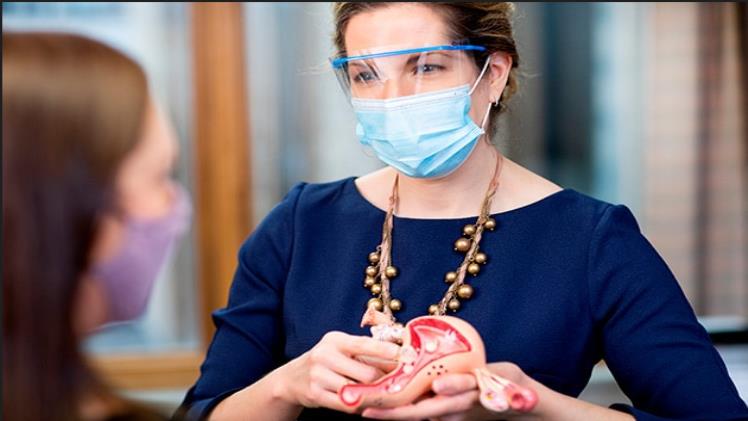For most women, uterine fibroids grow undetected. Other women may feel an imbalance in their hormones or experience heavy menstrual periods. Uterine fibroid treatment is becoming increasingly common and has scientific evidence to back up the procedures. There are more treatment options for women to treat their fibroids and improve their quality of life. Learn what fibroid treatments can be performed without surgery and protect fertility.
What are Uterine Fibroids?
A uterine fibroid is a growth that can form on the uterine wall which is made up of blood vessels. Fibroids can grow very large and cause symptoms like pelvic pain, heavy bleeding, and problems with urination. They can also affect fertility and treatments are available for those who experience symptoms.
Some women first try holistic or noninvasive treatments, like changing their diet or taking herbs. Some treatments can get rid of uterine fibroids, but sometimes surgery is needed.
Can they be treated?
Since uterine fibroids are masses in the uterine wall, many patients assume they are cancerous. Fibroids are very common and are not cancerous. Many types of fibroids don’t cause any symptoms and don’t require any treatment.
There are multiple different ways to treat uterine fibroids including surgical treatment options, but many women opt for the non-surgical treatment route. A minimally invasive procedure is often appealing because it stops fibroid development and avoids complications associated with more invasive procedures like a total hysterectomy. Before we look at the treatment options available, let’s learn how fibroids are diagnosed.
How to Locate Fibroids
Uterine fibroids are diagnosed by examining the uterine wall. Doctors will use an ultrasound to see how many fibroids there are,where they are, and how large they are.
Uterine Artery Embolization
One way to treat uterine fibroids without surgery is by embolization. The goal is to shrink fibroids and avoid large abdominal incisions.
This is done by blocking the arteries that supply blood to the fibroids. The goal of this procedure is to discontinue the blood flow to the fibroids. With every procedure comes potential risks, and one of the most common complications of this procedure is pain due to the interruption of blood flow, as well as the temporary lack of oxygen to the normal uterine tissue. Early studies show that uterine artery embolization does not generally affect reproductive function and may be an option for women who wish to become pregnant.
Endometrial Ablation
Endometrial ablation is a minimally invasive procedure used to remove or destroy the uterus’s endometrial lining in women with heavy menstrual bleeding. Endometrial ablation is not recommended for people who wish to have children since fertility can be negatively impacted.
Radiofrequency Ablation
This is a minimally invasive procedure that incorporates energy through a small needle array for fibroid removal. Many women prefer this method because of the quick recovery. After the energy is delivered to shrink uterine fibroids, they will become smaller over time.
Natural Remedies
There are many natural remedies for shrinking fibroids in the uterus. One way is to eat healthily and maintain a healthy weight, which will help prevent fibroids from forming. There are also supplements and holistic methods that may help shrink uterine fibroids.
Maintaining a healthy diet and weight is extremely important. The food that we consume to fuel our body provides the foundation for our energy and hormones. For example, if we consume highly estrogenic foods, our hormonal balance can be impacted resulting in the development of conditions such as fibroids which are promoted by persistently high estrogen production.
Some foods to avoid are fatty red meats, dairy, soy, dried fruits, sugar, and refined carbohydrates. Meats and dairy in particular carry the hormones of the animals they came from. Some foods can be consumed in moderation, but when trying to balance your hormones and avoid the development of fibroids without surgery, it is important to be mindful of the foods that present the highest risk factor to you so you can minimize your risk.
Foods that will help fibroid treatment include cabbage, kale, and broccoli. These vegetables will help balance the hormones in your body. Other balance-helping foods are artichokes, fish, and healthy fats including avocado, walnuts, and coconut oil.

